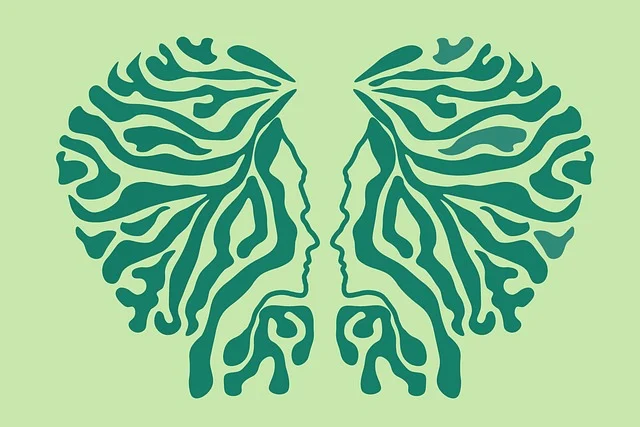Exploring Mood Disorders: Symptoms, Causes, 5 Best Approaches and Interventions

Mood disorders are a category of mental health conditions characterized by significant disturbances in a person’s mood, which can affect their daily functioning and overall quality of life. They include conditions such as depression and bipolar disorder. Understanding the symptoms, causes, and effective approaches for managing mood disorders is crucial for both individuals and mental health professionals.

Page Contents
- 1 Exploring Mood Disorders: Symptoms, Causes, 5 Best Approaches and Interventions
- 2 2 Symptoms of Mood Disorders
- 3 3 Causes of Mood Disorders
- 4 5 Best Approaches to Treating Mood Disorders
- 5 3 Psychotherapies
- 6 How 3 Psychotherapies Work for Mood Disorders: CBT, IPT, and Psychodynamic Therapy
- 7 Tailoring Which Therapeutic Approach Fits In
- 8 Conclusion
Exploring Mood Disorders: Symptoms, Causes, 5 Best Approaches and Interventions

2 Symptoms of Mood Disorders
1. Depression
- Emotional Symptoms: Persistent sadness, unhappiness, hopelessness, or emptiness. Feelings of worthlessness or excessive guilt.
- Cognitive Symptoms: Difficulty concentrating, indecisiveness, or worst recurrent thoughts of death or suicide.
- Behavioral Symptoms: Withdrawal from social activities, reduced productivity, or neglecting responsibilities.
- Physical Symptoms: Changes in appetite or weight, sleep disturbances (insomnia or hypersomnia), and fatigue.
2. Bipolar Disorder
- Manic Episode: Elevated mood, increased energy, and activity levels. Symptoms may include racing thoughts, impulsivity, grandiosity, and decreased need for sleep.
- Depressive Episode: Similar symptoms to those of depression, including persistent sadness, unhappiness, loss of interest, and fatigue.
- Mixed Episode: Features of both manic and depressive symptoms occurring simultaneously or in rapid succession.
3 Causes of Mood Disorders
1. Biological Factors
- Genetics: Family history of mood disorders can increase susceptibility. Genetic research suggests a hereditary component.
- Neurochemistry: Imbalances in neurotransmitters such as serotonin, norepinephrine, and dopamine are linked to mood regulation issues.
- Hormonal Changes: Fluctuations in hormones, such as those occurring during pregnancy, menopause, or thyroid dysfunction, can influence mood.
2. Psychological Factors
- Cognitive Patterns: Negative thinking styles and maladaptive beliefs can contribute to mood disorders. For example, pervasive feelings of inadequacy or hopelessness.
- Stress and Trauma: Exposure to traumatic events or chronic stress can trigger or exacerbate mood disorders. Childhood abuse, significant loss, or major life changes can play a role.
3. Environmental Factors
- Life Events: Major life changes, such as the death of a loved one, divorce, or job loss, can precipitate mood disorders.
- Social Support: Lack of a strong social support network can contribute to the development or worsening of mood disorders.


5 Best Approaches to Treating Mood Disorders
1. Psychotherapy
- Cognitive Behavioral Therapy (CBT): Helps individuals identify and change negative thought patterns and behaviors associated with mood disorders.
- Interpersonal Therapy (IPT): Focuses on improving interpersonal relationships and addressing role transitions and social support issues.
- Psychodynamic Therapy: Explores underlying unconscious conflicts and early life experiences that may contribute to mood disorders.
2. Medication
- Antidepressants: For depression, commonly prescribed medications include selective serotonin reuptake inhibitors (SSRIs) and serotonin-norepinephrine reuptake inhibitors (SNRIs).
- Mood Stabilizers: For bipolar disorder, medications such as lithium and anticonvulsants help stabilize mood swings.
- Antipsychotics: May be used in conjunction with mood stabilizers for managing severe manic episodes or mixed states.
3. Lifestyle and Support Strategies
- Regular Exercise: Engaging in physical activity can help improve mood and overall mental health.
- Healthy Diet: A balanced diet supports overall well-being and can impact mood stability.
- Sleep Hygiene: Establishing a regular sleep schedule and addressing sleep disturbances can help manage mood symptoms.
4. Crisis Intervention
- Emergency Support: Immediate support is crucial during acute episodes or suicidal crises. This may involve emergency services or crisis hotlines.
- Short-Term Crisis Counseling: Provides immediate, short-term support to stabilize individuals in crisis and connect them with ongoing treatment resources.
5. Community and Peer Support
- Support Groups: Offer opportunities for individuals to share experiences and receive support from others facing similar challenges.
- Community Resources: Local organizations and services provide additional support, including educational resources and group therapy options.

3 Psychotherapies
How 3 Psychotherapies Work for Mood Disorders: CBT, IPT, and Psychodynamic Therapy
Mood disorders, including depression and bipolar disorder, benefit significantly from various forms of psychotherapy. Cognitive Behavioral Therapy (CBT), Interpersonal Therapy (IPT), and Psychodynamic Therapy are three well-established approaches, each with its own methods and goals. Understanding how these therapies work can help individuals choose the most appropriate treatment for their needs.
1. Cognitive Behavioral Therapy (CBT)
How It Works:
- Identification of Negative Thought Patterns: CBT focuses on recognizing and altering negative thought patterns and beliefs that contribute to mood disorders. For example, a person with depression may have pervasive negative thoughts like “I am worthless,” which CBT helps to identify and challenge.
- Cognitive Restructuring: The therapy involves cognitive restructuring techniques to replace distorted thoughts with more balanced and realistic ones. For instance, if a person believes they are a failure due to a single setback, CBT encourages them to consider their achievements and strengths.
- Behavioral Activation: CBT also includes strategies like behavioral activation, which helps individuals engage in meaningful and pleasurable activities to counteract depression and improve mood. This might involve setting small, achievable goals to increase activity levels and social engagement.
- Skill Development: CBT teaches practical skills for managing mood symptoms, such as stress management techniques, problem-solving skills, and relaxation exercises. These skills help individuals cope with challenges and reduce symptoms of mood disorders.
Effectiveness:
CBT is evidence-based and effective for treating depression and various anxiety disorders. It helps individuals gain control over their thoughts and behaviors, leading to improved mood and functioning.
2. Interpersonal Therapy (IPT)
How It Works:
- Focus on Interpersonal Relationships: IPT emphasizes the impact of interpersonal relationships and social functioning on mood disorders. It explores how relationship issues, role transitions, and social support affect emotional well-being.
- Role Transitions: IPT addresses difficulties related to significant life changes or role transitions, such as moving to a new city, starting a new job, or experiencing a breakup. The therapy helps individuals navigate these transitions and adjust their expectations and behaviors.
- Improving Communication Skills: The therapy involves improving communication and assertiveness skills to enhance interpersonal relationships. Effective communication can reduce conflicts and increase support from others, which is beneficial for managing mood disorders.
- Grief and Loss: For individuals dealing with loss or bereavement, IPT provides strategies for processing grief and adjusting to the loss. It supports individuals in finding ways to cope with their emotions and rebuild their social networks.
Effectiveness:
IPT is particularly effective for depression, especially when the symptoms are linked to relationship issues or significant life changes. It helps individuals improve their social support and interpersonal skills, which can alleviate symptoms of mood disorders.
3. Psychodynamic Therapy
How It Works:
- Exploring Unconscious Processes: Psychodynamic therapy focuses on exploring unconscious processes and early life experiences that influence current emotional patterns. It helps individuals understand how unresolved conflicts and internalized feelings impact their mood.
- Analyzing Defense Mechanisms: The therapy involves examining defense mechanisms, such as repression or denial, that individuals use to protect themselves from emotional pain. By recognizing and addressing these defenses, individuals can confront underlying issues contributing to their mood disorder.
- Understanding Transference: In psychodynamic therapy, transference—where patients project feelings and attitudes from past relationships onto the therapist—is explored. Understanding these projections helps individuals gain insight into their relational patterns and emotional responses.
- Working Through Internal Conflicts: The therapy helps individuals work through internal conflicts and unresolved issues from their past. This might involve exploring relationships with primary caregivers or significant life events that have shaped their emotional life.
Effectiveness:
Psychodynamic therapy is beneficial for individuals with mood disorders who are interested in exploring deeper emotional and relational issues. It helps individuals gain insight into their emotional patterns and work through unresolved conflicts that contribute to their mood symptoms.
Tailoring Which Therapeutic Approach Fits In
Each of these psychotherapies—CBT, IPT, and Psychodynamic Therapy—offers unique approaches to managing mood disorders. CBT focuses on changing negative thought patterns and behaviors, IPT addresses interpersonal relationships and social support, and Psychodynamic Therapy explores unconscious processes and early life experiences. By tailoring the therapeutic approach to an individual’s needs, these therapies can effectively support individuals in managing their mood disorders and improving their overall well-being.
Conclusion
Mood disorders, including depression and bipolar disorder, significantly impact individuals’ emotional and physical well-being. Recognizing the symptoms and understanding the causes can lead to more effective treatment and management strategies. Approaches such as psychotherapy, medication, lifestyle changes, and support systems are integral to addressing mood disorders. With the right interventions and support, individuals can manage their symptoms and improve their quality of life. If you or someone you know is struggling with a mood disorder, seeking professional help is a vital step toward recovery and well-being.






